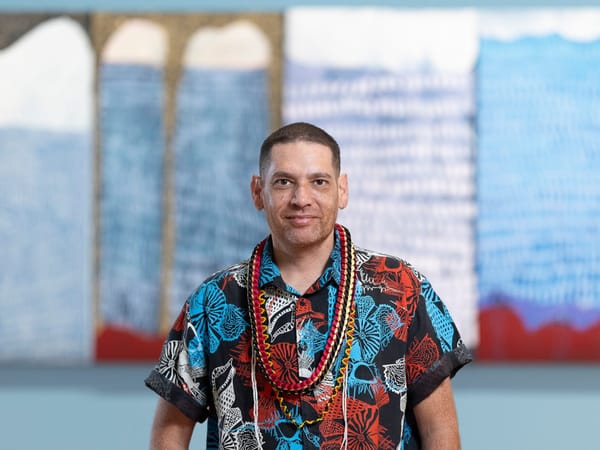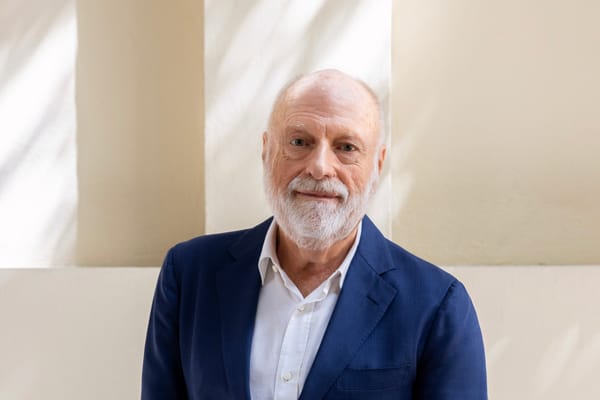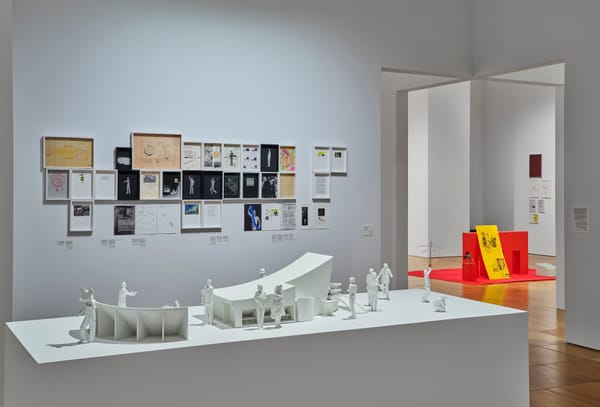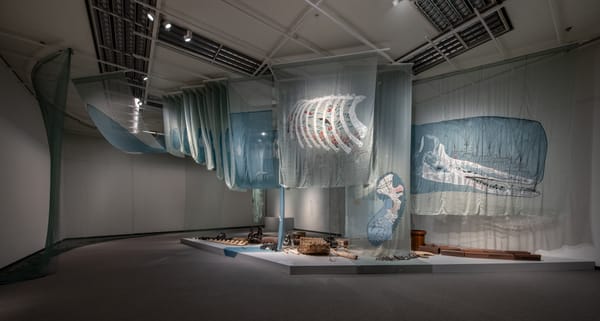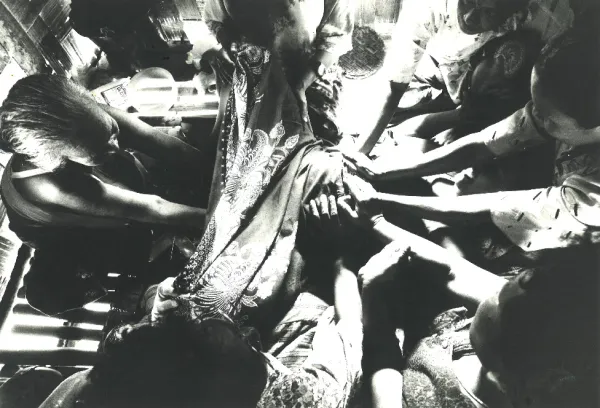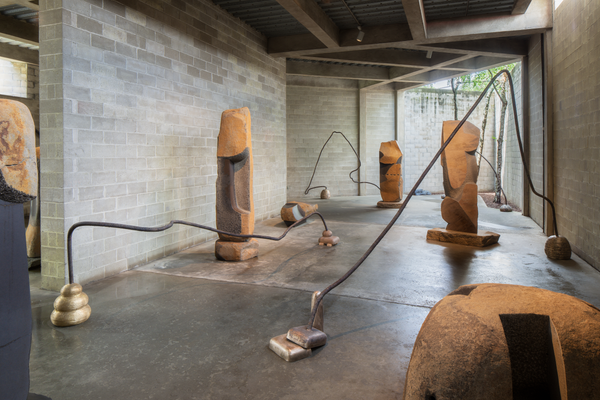Shows
Li Ran’s “The Signs Are Present”
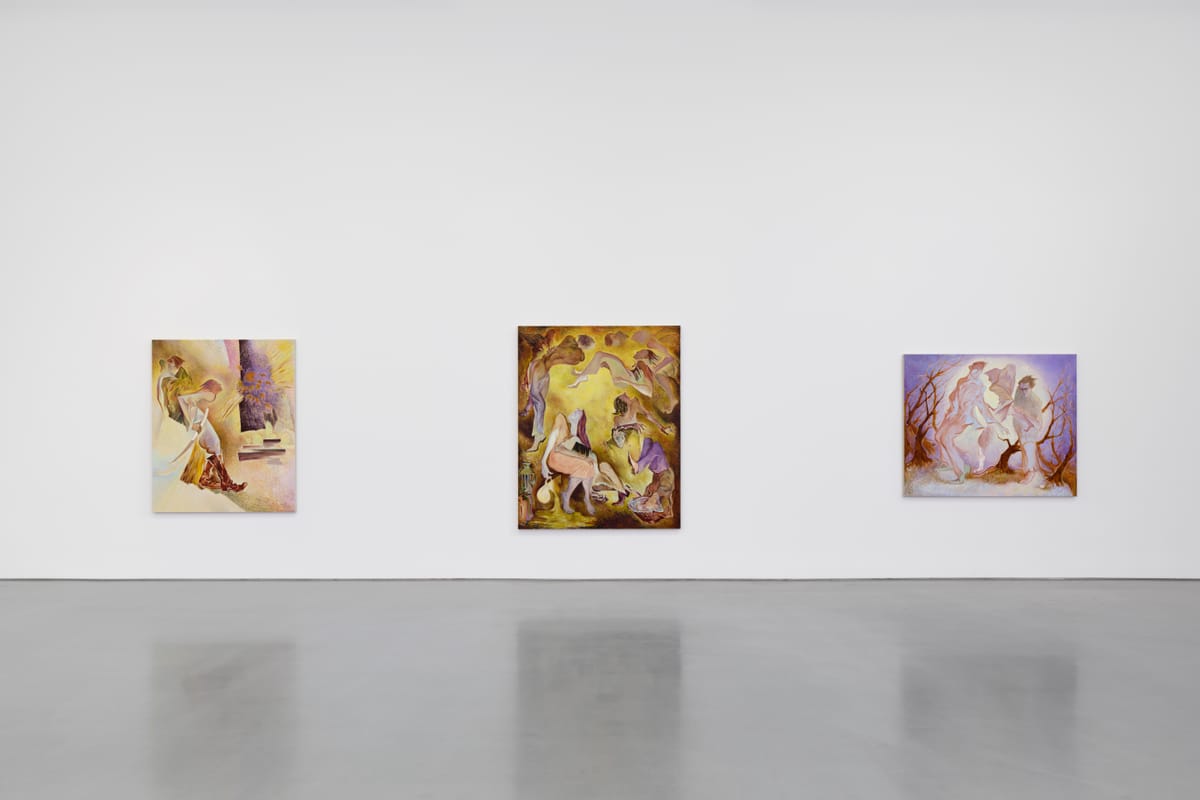
Li Ran
The Signs Are Present
Lisson Gallery
Los Angeles
27 Jun–23 Aug, 2025
In Shanghai-based artist Li Ran’s 2013 satirical, pseudo-Soviet style video work, From Truck Driver to the Political Commissar of the Mounted Troops, the narrator, a younger Li, intones: “You must constantly change tactics in the face of an enemy, so that they wouldn’t be able to tell who you are.” Following this directive, Li never adheres to a singular creative approach, working across installation, performance, writing, video, painting, and more to produce artworks containing sociopolitical and historical commentary—presumably in an effort to evade Xi Jinping’s ever-intensifying “Great Firewall of China” and other government surveillance systems monitoring the dissemination of information.
For his first solo show at Lisson Gallery in Los Angeles, titled “The Signs Are Present,” Li debuted a series of paintings that drew on a wide range of references, from Eastern and Western religions to Hollywood zombie movies. His visually coherent but chaotic mashup of cultures, geographies, and eras captures the spirit of an unmoored contemporary age, as well as Li’s own philosophizing and perhaps an unspoken yet palpable, personal dissatisfaction with an indeterminate “art world” and “art community.”

Li has described his daily practice of reading the Bible as an entry point into the mysticism he seeks to depict in his paintings. (While churches are not expressly outlawed in China, they are highly scrutinized by the government, which promotes atheism and views Christianity as a foreign organized religion.) In line with this personal engagement with traditional texts, many of his projects carry the didactic feeling of a scriptural parable—a story with a lesson to be gleaned.
The two-paneled It’s Sorcery! Not Romance, And Not Revolution (all works 2024) stretches along one gallery wall. A dozen entangled characters tumble across the picture plane, bringing to mind Egon Schiele’s angular Expressionism and bold portrayals of human corporeality. Pallid faces, eyes closed in anguish, the rendering of a sickly dark green skull, and a jaundiced color palette recall the febrile air of an opium den, full of death and decay. The figures bleed into one another, symbolizing a chain of associations and fluidity of thought, while one individual on the left panel is more fleshed out. Goggle-eyed and almost fully reclined, he invokes China’s tang ping (“lie flat”) youth movement, which emerged in 2020 and refers to an anxious generation in silent rebellion, eschewing the frantic rat race in favor of—as the name indicates—lying flat and doing nothing.
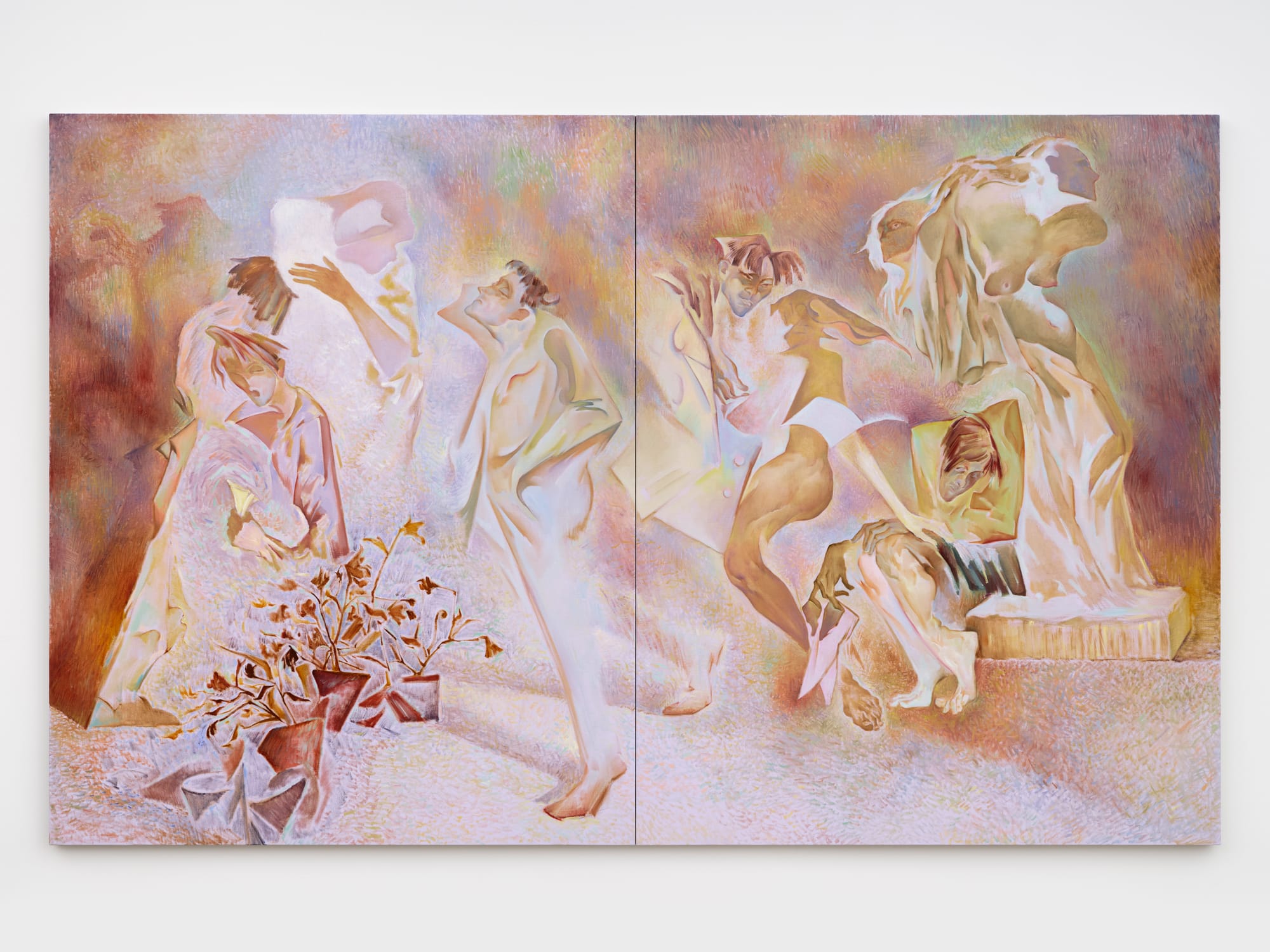
By contrast, Reunion in Paradise glows brightly with a kaleidoscopic, celestial atmosphere. Flowers anchor the left-hand corner of the canvas, and an accompanying artist’s statement points out that these are “not in bloom, and to be honest, I don’t enjoy painting flowers in full bloom anyway.” Might this be a direct, if subtle, rejoinder to Mao Zedong’s 1956–57 campaign, which invited Chinese intellectuals to criticize the government, but ultimately ended with vicious persecutions and crackdowns? As the withering florals allude to the late communist leader’s delusive encouragement to “let a hundred blowers bloom, let a hundred schools of thought contend,” spritely and godlike figures fill the scene, limned with a Futurist dynamism. A central character reads a luminous, levitating book. On the far right, a spirit seemingly emerges from a Classical sculpture. Sitting at the foot of the statue, a dejected character dangles a pair of pointed baby pink shoes, which appear to hold feet that are disembodied at the ankles—reminiscent of Hans Christian Anderson’s disturbing fairy tale The Red Shoes (1845), which warns against vanity.
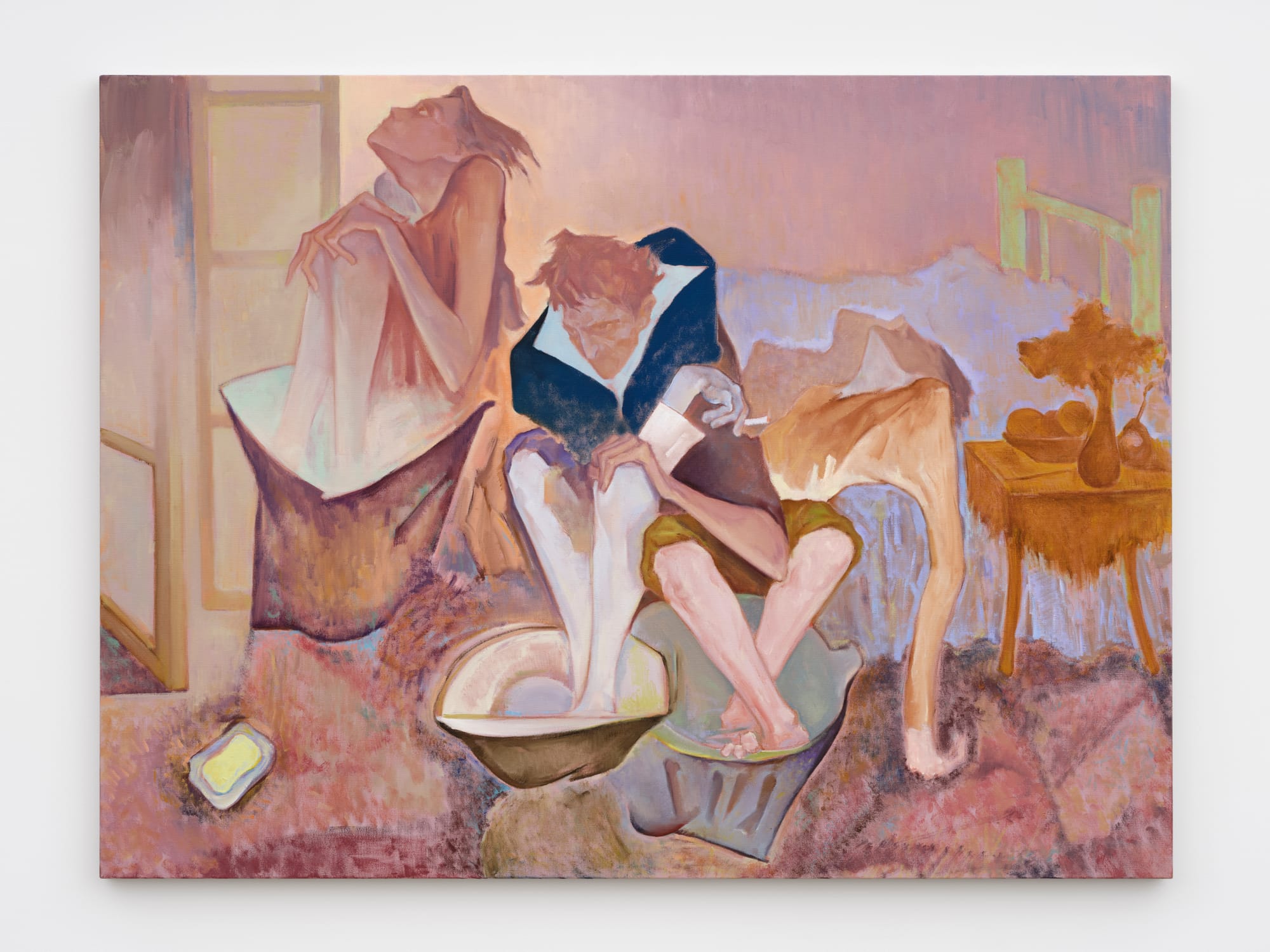
A curious detail in this body of work is that some characters don loafers or boots, while others are barefoot or wearing slippers. In the Bible, the removal of shoes or washing of feet often symbolizes humility and service to others. In They Wash Feet But They Don’t Bond, They Are Fellows But They Don’t Trust, three slumping figures dwell in the close quarters of a Van Gogh-esque bedroom, arms and legs touching, and yet all seem to be in their own world. Here, Li’s artist statement obliquely declares: “As the title suggests, this is the saddest historical moment of our so-called art ‘community.’”
Having dabbled with various faiths and schools of thought, Li now expresses doubts in philosophy as well as art. The only work in the show bereft of human figures is That Empty Tomb, which, with its depiction of an assemblage of objects including a skull, reads like a memento mori. Through “The Signs are Present,” Li proffers the idea that Cartesian doubt is the surest path to truth. He lays bare his anxiety in giving credence to any one particular system or group, for—proven wrong—one must face the futility of one’s life-long principles and motivations.
Jennifer S. Li is a writer, art advisor, and educator based in Los Angeles. She is also ArtAsiaPacific’s Los Angeles desk editor.
